Visual inspection is critical to monitoring industrial machinery, transportation infrastructure, manufacturing output, workplace safety, and many other industrial processes. Automated visual inspection is made possible by AI-powered computer vision systems.
Today, human visual inspectors conduct most visual inspections, but manual visual inspection is time-consuming and costly for organizations to deliver. Many visual inspectors have niche expertise and require specialized training. Organizations worldwide are experiencing workforce shortages, and this labor shortage is driving the cost of visual inspection up even higher. Visual inspection is a bottleneck in many industrial processes, products, and services where companies are trying to produce outputs at high velocity with few defects.
Automated visual inspection can detect failures earlier and more effectively than manual human inspection and can reduce equipment failures and maximize operational availability. By employing advanced image recognition techniques for visual inspection and fault detection, productivity increases of up to 50% are possible. Specifically, AI-based visual inspection based on image recognition may increase defect detection rates by up to 90% as compared to human inspection.
In this post, we will help you understand four key ways that visual inspection can be valuable and show you how to calculate the ROI of your automated visual inspection solution.
Return on investment (ROI) is a popular metric because of its versatility and simplicity. The math behind ROI is straightforward enough: you take the ratio of the gain or loss from an investment relative to its cost, and the result gives you an understanding of the overall profitability of your investment. The basic formula looks like this:
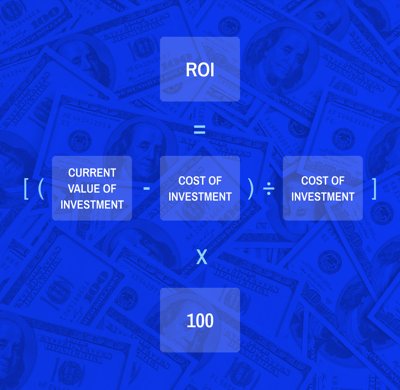
So as an example, suppose you invested $1,000 in Max Technology Inc in 2017 and sold the shares for a total of $1,200 one year later. To calculate the return on this investment, divide the net profits ($1,200 - $1,000 = $200) by the investment cost ($1,000), for a ROI of $200/$1,000, or 20%.
When making a technological investment, the formula for calculating ROI is written similarly to the classic ROI formula that we mentioned above, but with slightly different terms:
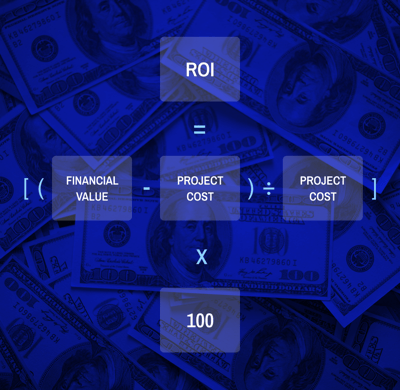
Instead of talking about the “current value” of an investment, and its cost, we talk about the “financial value” and the “project cost”. So how does one go about defining this financial value, or determining your project cost?
Automated visual inspection uses cameras instead of human eyes to inspect objects and places. Just like human eyes, cameras are multi-purpose tools that can be used for a huge variety of applications, so there are a huge number of potential use cases that you may be interested in automating. To understand expected financial value, you will need to take a closer look at your specific project and think about the type of benefit that you expect to see from automating your visual inspection processes.
Let’s take a look at three categories that highlight the benefits and financial value of typical Automated visual inspection use cases: improvement in uptime, accuracy, and processing speed.
Sustainably and consistently delivering value is the goal of many industrial processes. Automated visual inspection can reduce the need for invasive sampling, where a line must be stopped so that a piece can be taken off and inspected. Uptime can result in greater production throughput, more to sell, and lower cost per item.
Automated visual inspection also leads to assets that run more efficiently, keeping equipment working longer and more effectively. Automated visual inspection makes it easier for technicians to follow precise standards for maintaining machinery and equipment to reduce downtime.
Automated visual inspection can reduce waste caused by idle time, processing time, underutilized workers, underutilized capital equipment, and overburdening staff and operations.
AI is increasing uptime in transportation:
A top 25 global airline wanted to speed up their non-destructive visual inspection to get planes back in the air faster. Passenger airlines only make revenue when their planes are functional and in the skies. An entire crew takes nearly one hour per plane to complete a visual inspection. The crew must methodically look at every spot on the aircraft lest they miss something vital.
Financial Value:
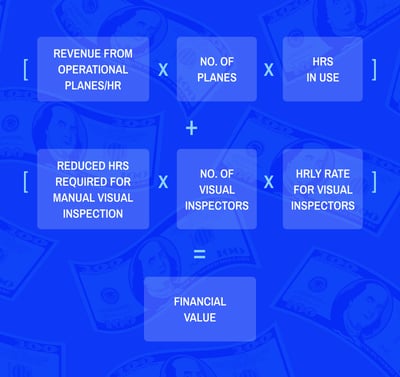
How much do mistakes cost? Mistakes in product launches can easily add up to millions of dollars and cause reputational damage if flawed or damaged products make it to market.
Automated visual inspection can help ensure that production and maintenance processes can be ceaselessly repeated with consistent results. Improved accuracy can reduce waste due to overproduction, excess inventory, inconsistency, and defective products.
Automated visual inspection can also play a key role in terms of workplace safety: when you eliminate human error you also greatly reduce the chance that a failure or malfunction of your product will cause damage to property or in a worst-case scenario actually harm someone.
AI is improving accuracy in manufacturing:
A major manufacturer wanted to visually inspect milled wooden parts as they came off of the production line. Flaws in the manufacturing process could repeat themselves thousands of times in a matter of minutes and cause significant waste if production output was not monitored closely.
Financial value:
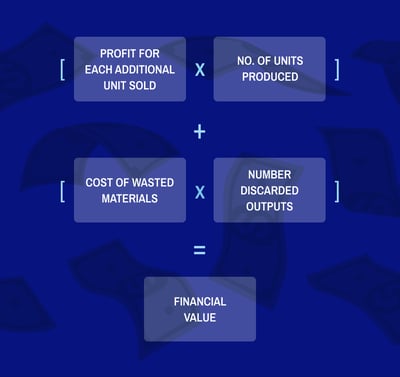
How valuable is scale? Automated visual inspection results in repeatable processes that are easily multiplied across production lines and industrial processes. Automating visual inspection helps to eliminate redundant, excessive, or inefficient activities that are time-consuming to complete manually.
Automated visual inspection can reduce the time it takes to set up new production lines and can guarantee standards are met at scale. Reduced time to market provides a competitive advantage in meeting customer demand and more products sold.
AI speeding up processing in pharmaceuticals:
A multinational pharmaceutical company wanted to produce a new therapy quickly and guarantee that regulatory requirements were met. By automating visual inspection, this company was able to demonstrate compliance with quality standards while delivering urgently needed therapies to the market in a timely manner.
Financial value:
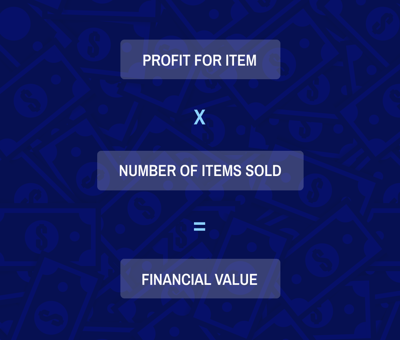
Automated visual inspection is powered by computer vision AI, which involves “machine learning”. Developing AI-powered solutions requires a significant investment of time and resources. If you build this kind of solution from scratch, at a minimum you will need: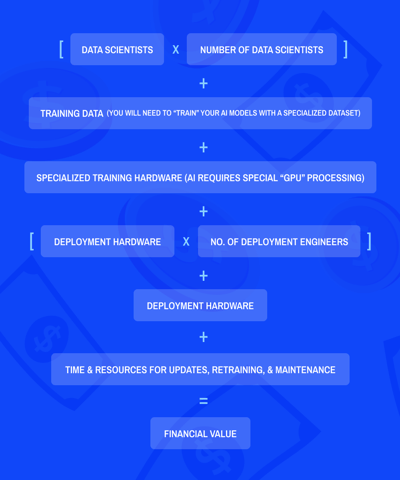
Alternatively, you could leverage a fully-featured AI development platform like the one offered by Clarifai. Clarifai offers pre-built models, easy model customization, and one-click deployment options that make it possible to get your solution up and running quickly without hiring a bunch of in-house experts. Clarifai also charges based on “operation” so you can easily understand how your costs will increase or decrease depending on the demands of your project. 
Automated visual inspection offers advantages over manual inspection, and the factors you need to consider in your ROI calculation will depend on the nature of your use case and the benefit that you expect to receive. Automated visual inspection typically results in improvements to operational uptime, accuracy, and processing speed. The time and costs associated with deploying AI-powered visual inspection technologies are greatly reduced by leveraging an end-to-end AI development platform like Clarifai.
.
© 2023 Clarifai, Inc. Terms of Service Content TakedownPrivacy Policy






© 2023 Clarifai, Inc. Terms of Service Content TakedownPrivacy Policy